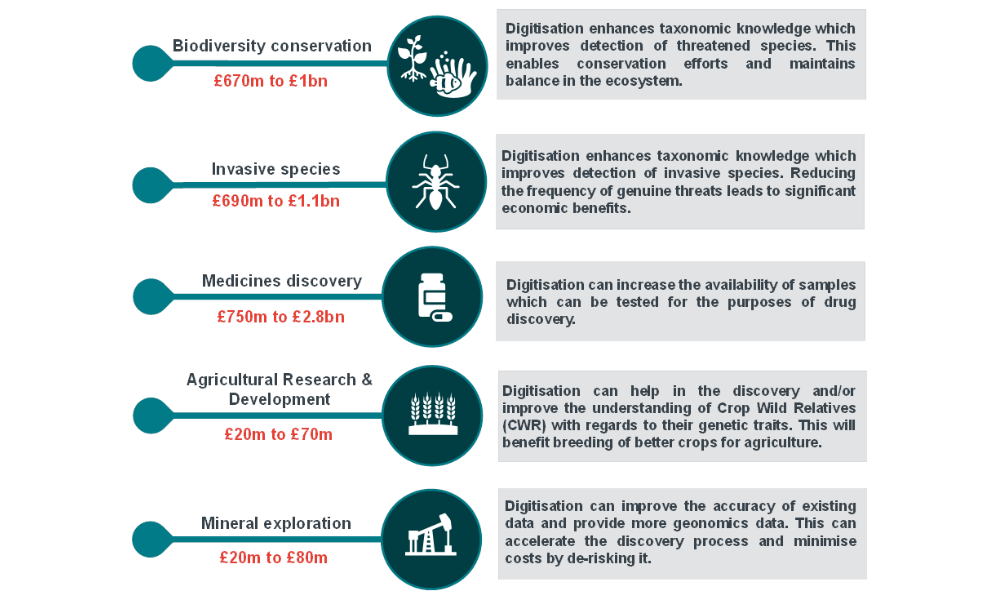The digitisation of the Natural History Museum’s 80 million objects has the potential to see a tenfold return on investment to the economy says new economic forecasting.
The new figures are the conclusion of research between the museum and economic consultants, Frontier Economics Ltd.
To date the museum has made 4.93 million specimens available on its Data Portal, data.nhm.ac.uk, through digitisation of specimens, which equates to around 6% of its collections.
The digitisation process typically includes aggregating data on where and when a specimen was collected and who found it, photographs, scans and other molecular data.
Costing tens of millions of pounds, the museum said it is difficult to make a case for further investment in digitising the remaining 94% without understanding the benefits of the process.
But new analyses done by Frontier Economics Ltd has enabled the museum to project the benefits of furthering the project. The company looked at the potential value that new research could create in five areas, focussing on what it called a “relatively narrow set of outcomes’.
The new analyses attempt to estimate the economic value of digitisation using a range of approaches.
The results, the museum said, “are at least ten times greater than the costs. This represents a compelling case for investment in museum digital infrastructure without which the many benefits will not be realised.”
It argues that the data from museum collections accelerates scientific research, which in turn creates benefits for society and the economy across a wide range of sectors.
To date, its already digitised specimens have been downloaded via the portal more than 28 billion times.
Helen Hardy, Science Digital Programme Manager at the Natural History Museum said the digitised collection have already helped to stablish the baseline plant biodiversity in the Amazon, find wheat crops that are more resilient to climate change and support research into potential zoonotic origins of Covid-19.
“The research that comes from sharing our specimens has immense potential to transform our world and help both people and planet thrive,” said Hardy.
Frontier Economics Ltd broke down the potential benefits of a fully digitised collection to economic segments including biodiversity conservation, invasive species, medicines discovery, agricultural research and development and mineral exploration.
The research funded as part of the Natural History Museum’s programme to build a science and digitisation centre at Harwell Science and Innovation Campus in Oxfordshire, is a key part of the Museum’s plans for digitisation.
It said it will enable a “major acceleration of collection digitisation to generate and share vital big data on the natural world and spark new collaborative research addressing major global challenges such as biodiversity loss and emerging diseases”.
Over 27 million Museum specimens will be housed at the facility alongside new laboratories once construction is completed in 2026.

Helen Hardy, Science Digital Programme Manager at the Natural History Museum said the digitised collection have already helped to stablish the baseline plant biodiversity in the Amazon, find wheat crops that are more resilient to climate change and support research into potential zoonotic origins of Covid-19.
“The research that comes from sharing our specimens has immense potential to transform our world and help both people and planet thrive,” said Hardy.






